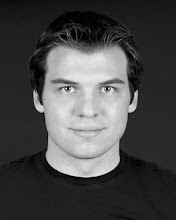The Art of Night/Twilight Photography
The subject of nighttime/twilight photographs and real estate photography is an interesting one. Twilight photographs have the ability to capture a viewer's eye in special ways. If done right, an effective twilight photograph should have rich color, a strong sense of texture, and the ability to convey mood. Like most topics photography related...you can only get away with it if the final product results in an impressive high-quality image. That being said, it is my nature to encourage anyone with a camera to explore it's capabilities and to discover your own talents in the process.
Here are some tips and techniques for capturing a good twilight photograph:
You do not have to be a pro, but you do need to know how to work your camera.
Twilight photographs are not intended to be taken in the automatic mode. If you are not capable of exploring the manual settings of your camera...these types of photos are not for you.
A steady shot is essential
A good tripod is a must have piece of equipment for quality nighttime photography. A good tripod does not necessarily have to be an expensive tripod. It is important that your tripod is steady and that you can lock your camera in position on the tripod.
A steady shot is essential.
A steady shot is essential.
Pick the proper location
Make sure that you pick a location that is not going to be hindered by bright lights aiming into your camera. A strong security light pointing into your lens or obstructing the view of your subject will surely be a distraction in your photograph. Do not forget to practice the rules of composition. Specifically, make sure to have an even horizon and to fill your frame. There are going to be an overwhelming amount of shadows in a nighttime photograph and making your subject fill the frame will keep your photograph from being boring.
Best methods for proper exposure
First make sure to use an ISO of 200 or below. A high ISO setting will result in a grainy image and a lower quality contrast throughout your photograph. For the best exposure use a high f-stop/aperture setting. F-12 to F-16 will make your brighter lights less aggressive and will also help give your photograph a sharp focus throughout. Finally, your shutter speed is the best tool for adjusting the exposure in this format. A longer exposure will let the light bleed into your photo for a more dramatic lighting. Generally an exposure of 15-30 seconds will create this effect really well. Do not forget that anything moving in your photograph will likely be blurred with a long exposure, and you should set a timer or use a remote to avoid blurring the photograph while taking the picture. Also remember to experiment with your exposures to get the photograph just right.
The proper white balance
In most cases a long exposure of this nature will cause your photograph to take on a very yellow look/white balance. It is important to correct the color of your photograph because thr color of a nighttime photograph's lighting will have a very dramatic effect. Almost every digital camera has a different set of menu options. The daylight white balance setting or tungsten setting will add blue to your image which will make the yellow lights appear clear or white.
Additional lighting
In this form of photography never use a flash. If your subject requires additional lighting, a strong directional light will be your best option to assist with the exposure.
It is not likely that you will get a perfect photograph the first time, but practice and experimentation will lead to incredible results!
It is not likely that you will get a perfect photograph the first time, but practice and experimentation will lead to incredible results!



